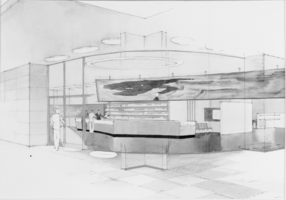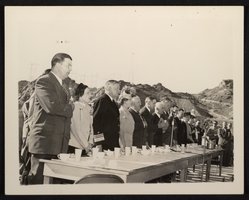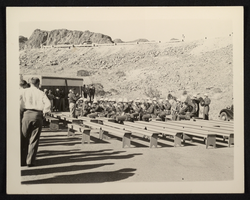Search the Special Collections and Archives Portal
Search Results

Film transparency of an architectural drawing, Nevada, circa 1930s-1940s
Date
Archival Collection
Description
Image

Film transparency of Lake Mead National Recreation Area administrative building, circa 1940s-1950s
Date
Archival Collection
Description
Image

Photograph of the Rotary Club, Hoover Dam, circa October 1946
Date
Archival Collection
Description
An image of Rotary Club members standing to sing the national anthem.
Image

Photograph of the Rotary Club, Hoover Dam, circa October 1946
Date
Archival Collection
Description
An image of Rotary Club members standing to sing the national anthem.
Image

Photograph of the Rotary Club, Hoover Dam, circa October 1946
Date
Archival Collection
Description
An image of Rotary Club members gathering for lunch.
Image

Photograph of the Army band, Hoover Dam, October 1946
Date
Archival Collection
Description
An image of an Army band performing for members of the Rotary Club.
Image
Goussak, Gregory W.
Gregory Goussak was born January 17, 1961 in Las Vegas, Nevada. He graduated from Chaparral High School in 1979, completed his bachelor’s and master’s degree at the University of Nevada, Las Vegas, and his doctorate through the University of Phoenix.
Greg's childhood was shaped by experiences with Las Vegas' sixth grade centers, challenges with scoliosis, and especially, involvement with B'nai B'rith Youth Organization (BBYO).
Person
